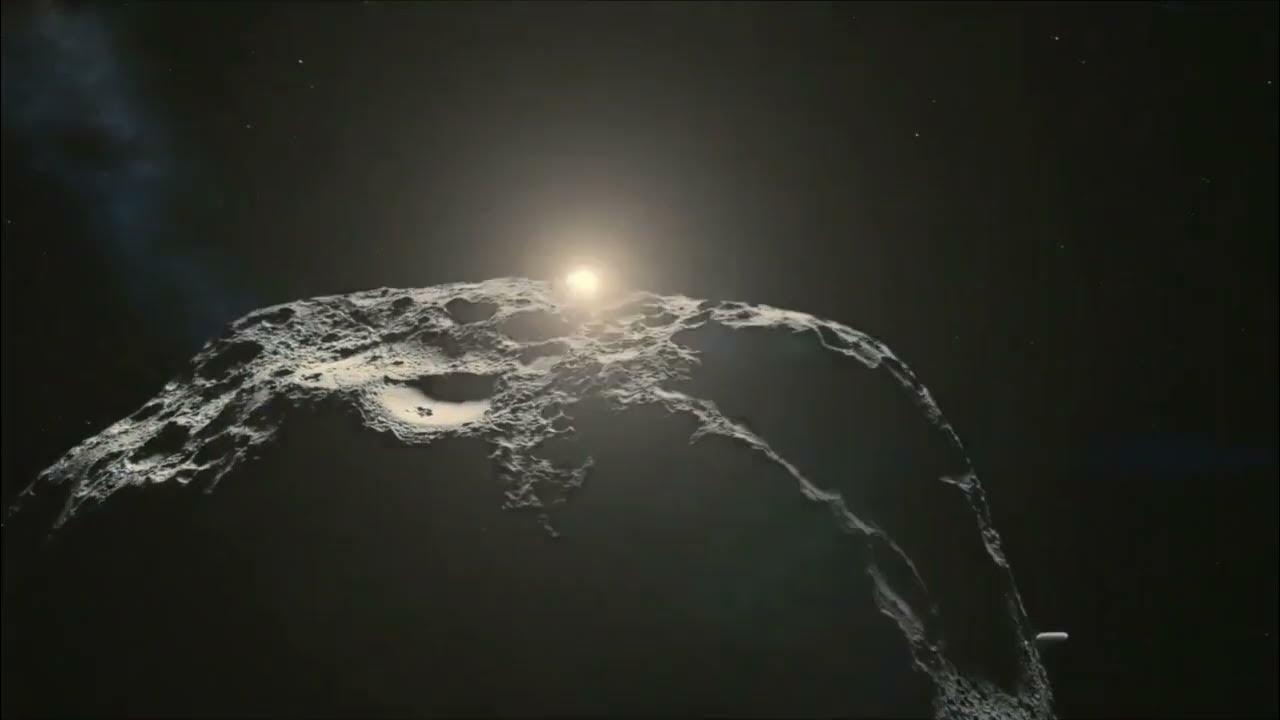Space Rocks | What's the difference between an asteroid, a meteoroid, a meteorite, and a comet?
Summary
TLDRThe script explores the dynamic asteroid belt between Mars and Jupiter, shaped by Jupiter's gravity into a 'solar junkyard.' It differentiates space rocks: asteroids, meteoroids, meteors, and meteorites, highlighting their density and age. It further delves into the snow line, Kuiper belt, and Oort cloud, explaining the journey of comets influenced by the gas giants. The script suggests comets may have delivered water and the building blocks of life to Earth, with the Rosetta mission potentially unlocking the origins of life.
Takeaways
- 🌌 The asteroid belt between Mars and Jupiter is a crowded region where rocks and metals couldn't form a planet due to Jupiter's gravitational influence.
- 🚀 Asteroids in the belt sometimes collide and get knocked off course, leading to different journeys through the solar system.
- 🪨 The larger space rocks are called asteroids, while the smaller ones are referred to as meteoroids.
- 🌠 When meteoroids enter Earth's atmosphere, they are known as meteors, and if they land on Earth, they are called meteorites.
- 🧲 Some meteorites contain iron, making them dense, dark, and magnetic, and they are among the oldest objects in the solar system.
- ❄️ The snow line in the solar system marks the boundary beyond which objects contain a lot of ice, influencing the composition of celestial bodies.
- 💠 The Kuiper Belt is a ring of ice chunks beyond the gas giants, where Pluto resides, and is home to many icy objects.
- 🌀 The Oort Cloud is a distant region containing a vast number of icy objects that can become comets when disturbed from their orbits.
- 🌈 Comets can develop long, beautiful tails when they approach the Sun, due to the warming and sublimation of their icy surfaces.
- 🌌 Earth experiences meteor showers when it passes through the debris trails left by comets, creating spectacular displays in the sky.
- 💧 It is hypothesized that comets and asteroids may have brought water and possibly the building blocks of life to Earth in its early history.
- 🚀 The European Space Agency's Rosetta mission aims to unlock secrets about the origins of life on our planet by studying comets.
Q & A
What is the asteroid belt and why is it located between Mars and Jupiter?
-The asteroid belt is a region in our solar system filled with chunks of rock and metal. It is located between Mars and Jupiter because the strong gravitational effects of Jupiter prevented these materials from coming together to form a planet, instead creating a 'solar junkyard'.
Why do asteroids sometimes collide and get knocked off course?
-Asteroids can collide with each other due to the crowded nature of the asteroid belt. These collisions can alter their trajectories, knocking them off course and even out of the belt altogether.
What is the difference between an asteroid, a meteoroid, a meteor, and a meteorite?
-Asteroids are larger space rocks, while meteoroids are smaller. When meteoroids enter Earth's atmosphere, they are called meteors. If they survive their descent and land on Earth, they are then known as meteorites.
Why are asteroids often dense, dark, and magnetic?
-Asteroids are dense and dark because they often contain iron. This iron content also makes them magnetic.
How old are asteroids and what significance do they have in relation to the solar system's age?
-Asteroids are the oldest objects in the solar system, as they are the same age as the solar system itself, providing a direct link to its early history.
What is the snow line and how does it relate to the composition of objects in the solar system?
-The snow line is a boundary in the solar system, marked by the gas giant Jupiter, beyond which objects contain a lot of ice. This is due to the colder temperatures in these regions, allowing volatile compounds like water, ammonia, and methane to remain solid.
What is the Kuiper Belt and what is its significance?
-The Kuiper Belt is a region beyond Neptune that contains a large number of icy objects, large and small. It is significant as it is home to the dwarf planet Pluto and many other 'dirty snowballs' that are ancient remnants of the solar system's formation.
What is the Oort Cloud and its role in the formation of comets?
-The Oort Cloud is a distant, spherical shell of icy objects that surrounds the solar system. Objects from the Oort Cloud can get bumped off course and become comets, which then journey towards the Sun.
How do comets form long, beautiful tails when they approach the Sun?
-As comets approach the Sun, the icy surfaces warm up and begin to vaporize, releasing gas and dust. This material forms a tail that always points away from the Sun due to the solar wind and radiation pressure.
What is the significance of comets in the early history of Earth?
-Comets are believed to have played a significant role in Earth's early history by possibly bringing water to our planet. They may also have delivered the ingredients necessary for life during impacts with the early Earth.
How could the European Rosetta mission help us understand the origins of life on Earth?
-The Rosetta mission, by studying a comet, could provide insights into the composition of these ancient objects. This information might help us unlock secrets about the origins of life on Earth, including the potential delivery of life's building blocks by comets.
Outlines

هذا القسم متوفر فقط للمشتركين. يرجى الترقية للوصول إلى هذه الميزة.
قم بالترقية الآنMindmap

هذا القسم متوفر فقط للمشتركين. يرجى الترقية للوصول إلى هذه الميزة.
قم بالترقية الآنKeywords

هذا القسم متوفر فقط للمشتركين. يرجى الترقية للوصول إلى هذه الميزة.
قم بالترقية الآنHighlights

هذا القسم متوفر فقط للمشتركين. يرجى الترقية للوصول إلى هذه الميزة.
قم بالترقية الآنTranscripts

هذا القسم متوفر فقط للمشتركين. يرجى الترقية للوصول إلى هذه الميزة.
قم بالترقية الآن5.0 / 5 (0 votes)






